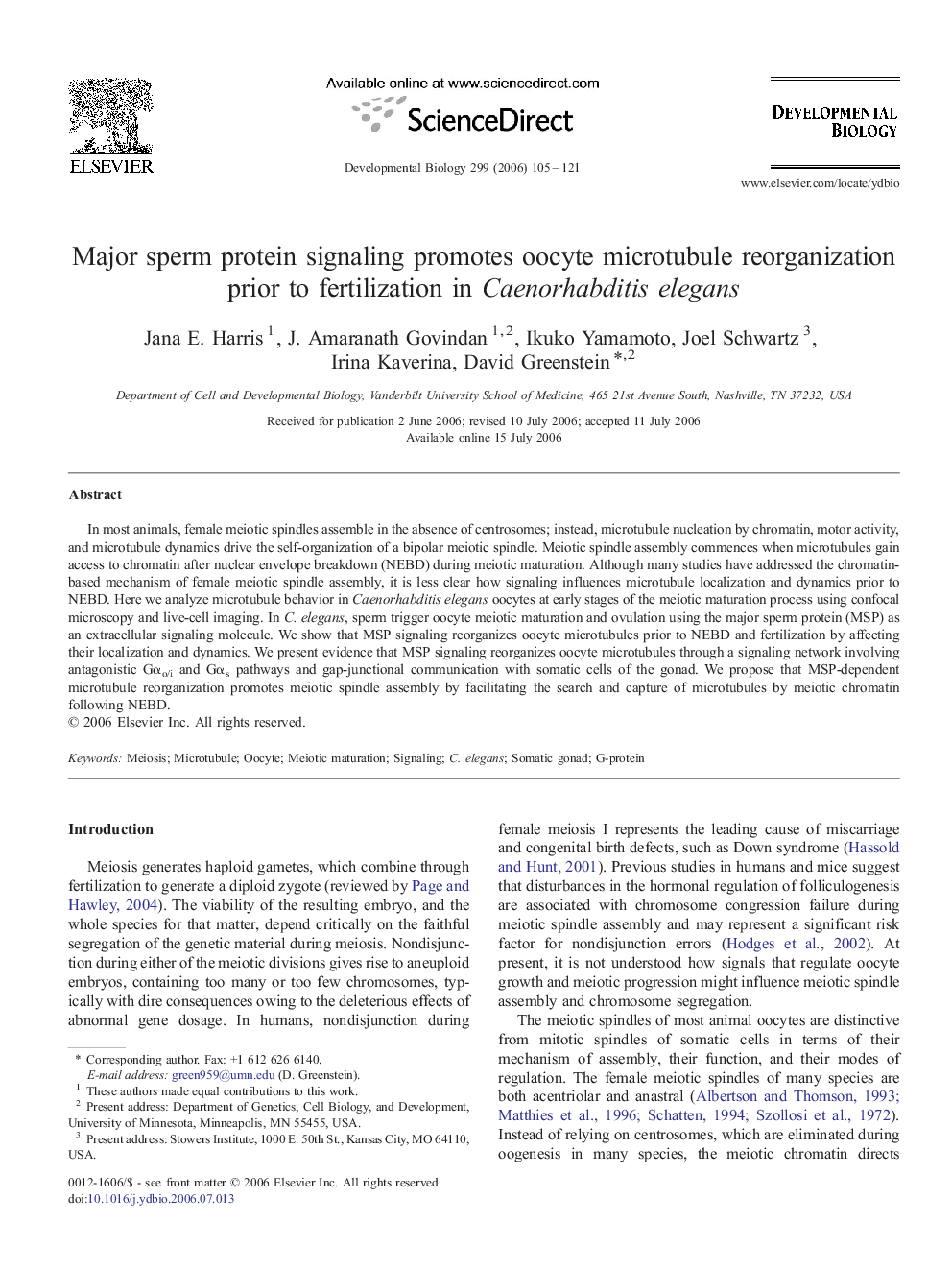| Article ID | Journal | Published Year | Pages | File Type |
|---|---|---|---|---|
| 2175510 | Developmental Biology | 2006 | 17 Pages |
In most animals, female meiotic spindles assemble in the absence of centrosomes; instead, microtubule nucleation by chromatin, motor activity, and microtubule dynamics drive the self-organization of a bipolar meiotic spindle. Meiotic spindle assembly commences when microtubules gain access to chromatin after nuclear envelope breakdown (NEBD) during meiotic maturation. Although many studies have addressed the chromatin-based mechanism of female meiotic spindle assembly, it is less clear how signaling influences microtubule localization and dynamics prior to NEBD. Here we analyze microtubule behavior in Caenorhabditis elegans oocytes at early stages of the meiotic maturation process using confocal microscopy and live-cell imaging. In C. elegans, sperm trigger oocyte meiotic maturation and ovulation using the major sperm protein (MSP) as an extracellular signaling molecule. We show that MSP signaling reorganizes oocyte microtubules prior to NEBD and fertilization by affecting their localization and dynamics. We present evidence that MSP signaling reorganizes oocyte microtubules through a signaling network involving antagonistic Gαo/i and Gαs pathways and gap-junctional communication with somatic cells of the gonad. We propose that MSP-dependent microtubule reorganization promotes meiotic spindle assembly by facilitating the search and capture of microtubules by meiotic chromatin following NEBD.
